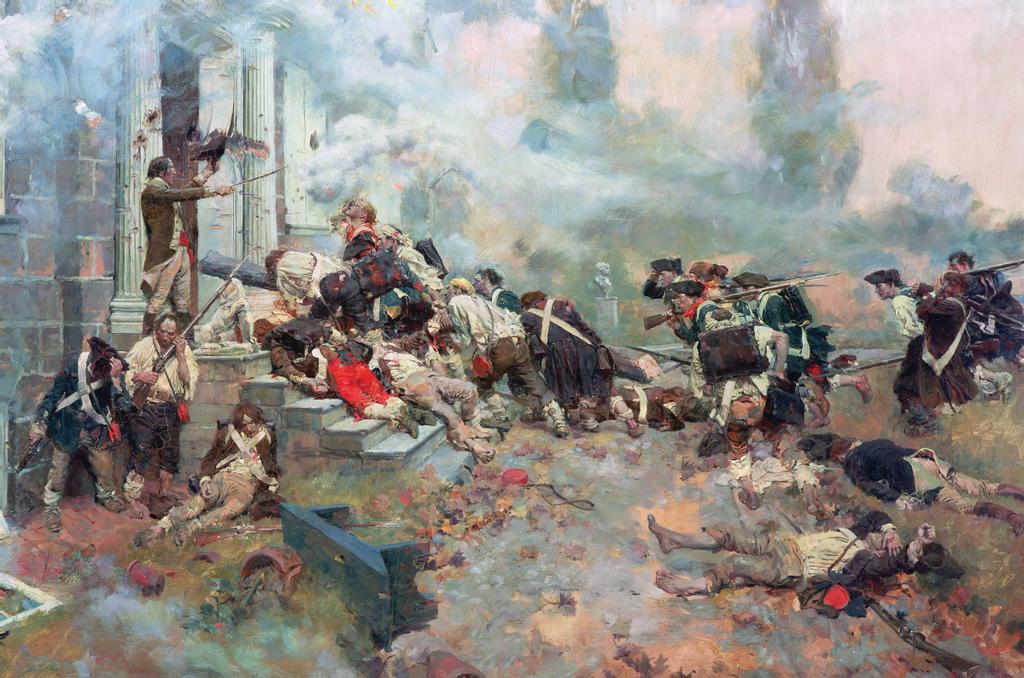
By early afternoon on Sept. 11, 1777, Gen. George Washington’s Continental Army had been fending off Hessian assaults across Chadds Ford for several hours. Having reconnoitered the advancing British army under Maj. Gen. Sir William Howe, Washington had chosen a strong defensive position on the east bank of Pennsylvania’s Brandywine River. If his men could hold the fords, the enemy would be unable to cross from the opposite shore to threaten Philadelphia. But around 2 p.m., as Washington surveyed the situation at Chadds Ford with some satisfaction, members of his staff noticed movement to the north. Scouts soon reported the approach of ranks of soldiers in red coats. Having crossed unguarded Jefferis Ford, 5 miles to the north, the main British body, led by Lt. Gen. Charles Cornwallis, had unexpectedly arrived on the American right flank in force with some 8,500 men. Washington’s staff, who only moments before had been calm and confident of the day’s outcome, searched frantically for reinforcements to counter the British flank attack and stave off disaster.
Among the American commander’s harried subordinates was a young and enthusiastic South Carolinian named John Laurens, who had joined the Continental Army a month earlier. Well educated, well connected and fluent in French, he’d been appointed to Washington’s staff as an aide-de-camp. While three divisions under Maj. Gen. John Sullivan rushed to the right to confront the British flank attack, Laurens rode in the opposite direction, looking for Maj. Gen. Nathanael Greene on the American left.
As Greene’s reinforcing division pivoted to confront the British flanking force, it was inundated with panicked Americans from Sullivan’s crumbling divisions. Mustering the energy and determination for which he would become famous, Laurens rallied many of the fleeing men under fire. Greene and his ad hoc mixture of Regulars and militia then made their stand on high ground near the Birmingham Meetinghouse. Conspicuous among the combatants was Laurens. The young South Carolinian wasn’t the only brave man






